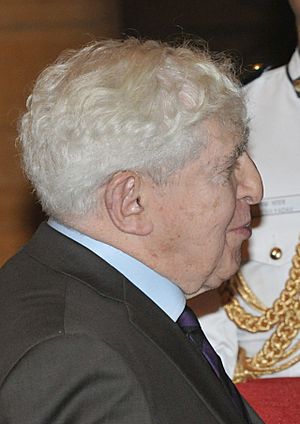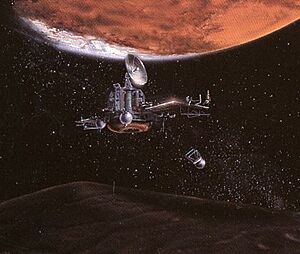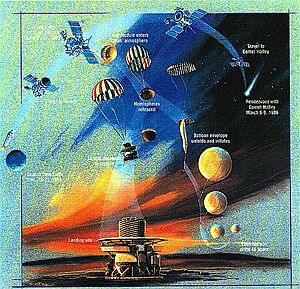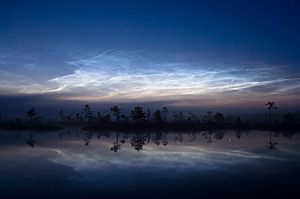Jacques Blamont facts for kids
Quick facts for kids
Jacques Blamont
|
|
|---|---|
 |
|
| Born |
Jacques Émile Blamont
13 October 1926 |
| Died | 13 April 2020 (aged 93) Châtillon, France
|
| Occupation | Astrophysicist |
| Known for | Aerospace programmes |
| Awards | Padma Shri Commander of the Legion of Honour Grand Officer of the National Order of Merit Commander of the Academic Palms Grand Cross of the National Order of Merit Rovel H. Prize Aimé Cotton Prize Leon Grelaud Prize CNES Vermeil Medal Prix Paul Doistau–Émile Blutet President's Silver Medal Daniel and Florence Guggenheim Award NASA Exceptional Scientific Achievement Medal USSR Academy of Sciences Gagarin Medal IAA Guggenheim Medal Soviet Order of Friendship of Peoples IAA Theodore von Karman Medal ISRO Vikram Sarabhai Medal Guiana Space Center Gold Medal Spie prize French Roberval Prize ISOE George N. Goddard Award NASA Distinguished Service Medal COSPAR Space Science Award |
Jacques Émile Blamont (born October 13, 1926 – died April 13, 2020) was a brilliant French scientist. He was an astrophysicist, which means he studied space and the universe. He was also a writer and helped start the National Centre for Space Studies (CNES), which is France's space agency.
Blamont is famous for helping to create the Veronique, which was the very first rocket launched by France in 1957. He was a respected professor at the Pierre and Marie Curie University and a member of the French Academy of Technologies. He received many important awards from France, India, and other countries for his amazing work in science and space.
Blamont passed away on April 13, 2020, in Châtillon, France, at the age of 93.
Contents
Jacques Blamont's Early Life and Education
Jacques Blamont was born in Paris, France, on October 13, 1926. He went to a special school called the École Normale Supérieure. There, he met a famous scientist named Alfred Kastler, who later won a Nobel Prize.
In 1948, Blamont finished his studies at the École Normale Supérieure. He then continued his research at the National Centre for Scientific Research (CNRS). In 1952, he worked with Alfred Kastler again, studying something called "atomic coherence." He earned his advanced science degree (Doctor of Science) in 1956.
A Career in Space Science
After getting his degree, Blamont stayed at the CNRS for another year. In 1957, he joined the Aeronomy Service, which studies the upper atmosphere. He quickly became the deputy director in 1958 and then the director in 1961. He held this important position until 1985.
During his time at CNES, France's space agency, he had many roles. He was a Scientific and Technical Director from 1962 to 1972. Later, he became a Top Scientific Advisor and an advisor to the President of CNES.
Blamont also taught at the Pierre and Marie Curie University. He was a professor there from 1962 to 1996 and then a professor emeritus, meaning he was a retired professor who still held an honored title. He also worked as a research director at the École Militaire, a military college.
International Collaborations and Memberships
Blamont was a visiting professor at the California Institute of Technology in 1985. He also worked as a distinguished visiting scientist at the Jet Propulsion Laboratory from 1980 to 2001. He was the first Vikram Sarabhai professor at the Physical Research Laboratory in India in 1977.
He was a member of many important scientific groups around the world. These included the International Academy of Astronautics (1969), the Indian National Science Academy (1978), and the National Academy of Sciences, USA (1980). He was also part of the French Academy of Sciences and the American Philosophical Society.
Jacques Blamont's Impact on Space Exploration
Jacques Blamont was a key figure in starting France's space program. He helped create CNES, the French Space Agency, in 1962. He is well-known for his work on the Véronique, France's first rocket, launched in 1957. He also helped establish the Aeronomy Service of the Centre national de la recherche scientifique and led it for many years.
Blamont played a big part in several international space missions. He was involved in Voyager and Pioneer-Venus missions by NASA. He also worked on the Vega mission by the Soviet Union to study Venus and Halley's Comet. He was the chief scientist for the Phobos program of the USSR.
He also helped Vikram Sarabhai set up the Indian National Committee for Space Research (INCOSPAR). This committee later became the Indian Space Research Organization (ISRO), India's space agency. Blamont even helped provide equipment for India's first two rocket launches in 1963 and 1964.
Key Scientific Discoveries
Blamont made several important scientific discoveries:
- In 1959, he discovered the turbopause, which is a boundary in Earth's upper atmosphere.
- In 1970, he found evidence of the interstellar wind, which is gas and dust moving between stars.
- In 1971, he discovered the hydrogen envelope around comets.
- In 1973, he identified polar noctilucent clouds, which are beautiful, glowing clouds seen at night in the upper atmosphere.
He was also the first to measure the temperature of the neutral atmosphere from 100 to 500 kilometers high. He studied the dynamics of the mesopause region and measured Einstein's general relativity redshift on the Sun.
Blamont led the team that brought scientific ballooning and Lidar technology to Europe. These technologies use balloons and lasers to study the atmosphere. An image compression device he developed is still used by space agencies for missions to the Moon, Mars, and Titan. He also helped establish the launch site in Kourou, French Guiana.
Books and Mentorship
Besides writing many scientific articles, Blamont also wrote four books. These included "Venus Unveiled" (1987) and "Introduction to the Age of Menaces" (2004). He also guided about 80 students in their doctoral research, helping them become scientists themselves.
Awards and Special Recognition
Jacques Blamont received many high honors for his contributions to science. He was given three of France's highest civilian awards: Commander of the Legion of Honour, Grand Officer of the National Order of Merit, and Grand Cross of the National Order of Merit. He also received the Commander of the Order of Academic Palms and a Silver Medal from the President of the French Republic in 1967.
In 1989, he received the Soviet Order of Friendship of Peoples from the former Soviet Union. In 2015, the Government of India gave him the Padma Shri, which is India's fourth-highest civilian award.
He won two awards from NASA: the Exceptional Scientific Achievement Medal in 1972 and the Distinguished Service Medal in 2000. The French Academy of Sciences honored him twice with the Leon Grelaud Prize in 1960 and the Prix Paul Doistau–Émile Blutet in 1967.
The Academy of Sciences of the USSR awarded him the Yuri Gagarin Medal in 1985. The Indian Space Research Organization gave him the Vikram Sarabhai Medal in 1994. He also received three awards from the International Academy of Astronautics: the Daniel and Florence Guggenheim Award (1967), the Guggenheim Medal (1986), and the Von Karman Award (1989).
Other awards he received include the Aimé Cotton prize (1960), the CNES Vermeil medal (1967), the Gold Medal of the Guiana Space Center (1995), and the COSPAR Space Science Award in 2004.
Award gallery
See also







